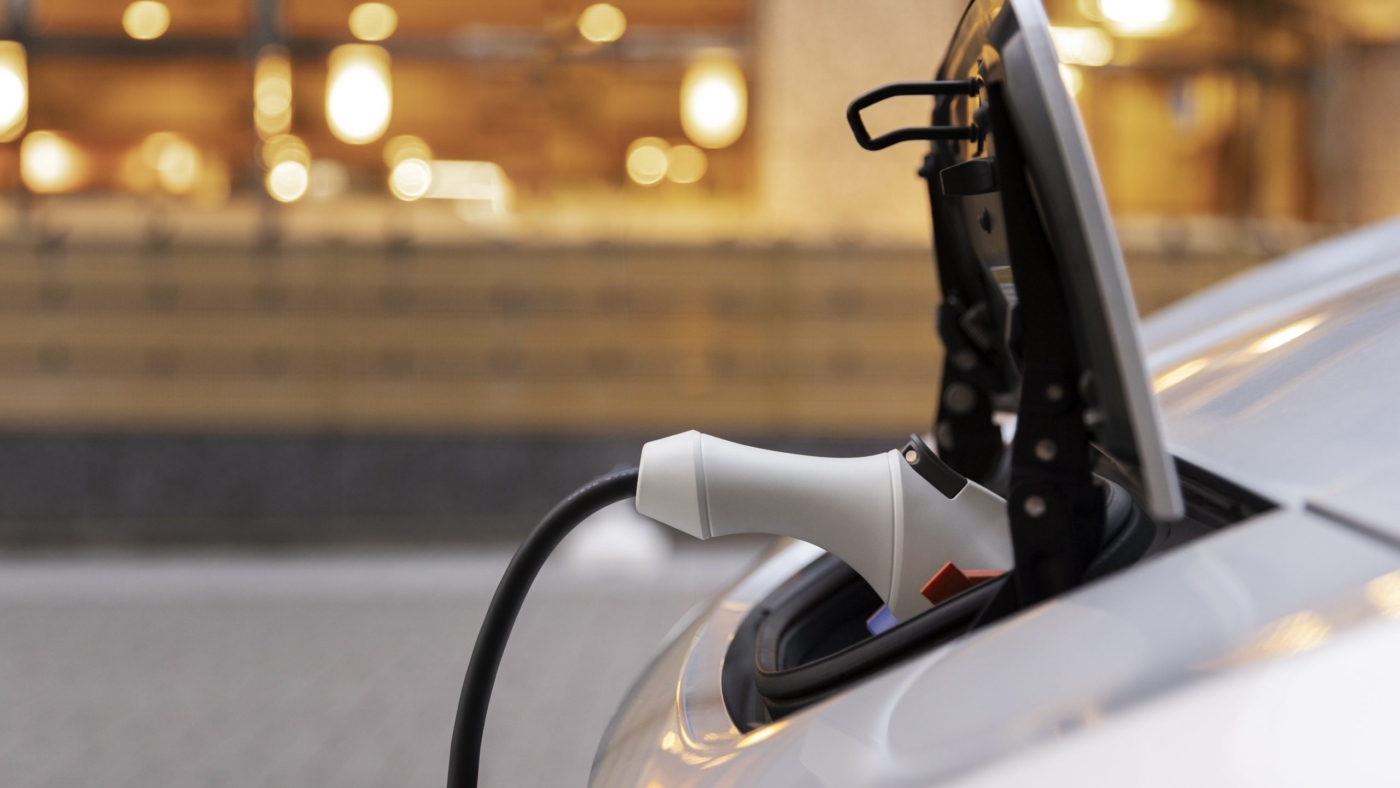Love them or hate them, electric vehicles are a glimpse at the future. Many current models are packed with various features designed to make our drive safer, more comfortable, and easier. They encourage us to sit up straighter, gently remind us to return to the correct lane when we start to drift, and offer games to play while waiting at a charging station. The future is now – and we are ready to embrace it.
With so many features packed into each vehicle, there are bound to be some hits and misses. Sometimes we’re in awe of how convenient EVs make our lives, and other times we just want to be left alone, yearning for the days when cars had dials and offered privacy. We’re going to review the essential EV features that are hard to live without once you have experienced them.
Vehicle-To-load Power: The Hyundai Ioniq 5 Becomes Your New Generator
The Specs That Matter: 3.6 kW output (enough to run a small house), 77.4 kWh battery pack, 120V and 240V outlets.
Remember when the biggest electrical upgrade to your truck was a cigarette lighter that could handle a CB radio? The Hyundai Ioniq 5 laughs at such quaint notions. This Korean crossover can pump out 3.6 kilowatts through its Vehicle-to-Load system. That’s enough juice to run your entire tailgate setup, power tools for a weekend project, or keep your house running during a blackout for about 24 hours.
The party trick becomes genuinely useful when you realize you’re carrying around the equivalent of a Honda EU3000iS generator everywhere you go, except this one’s silent, doesn’t need gas, and won’t wake up the entire campground at 6 AM. One owner in Texas used his Ioniq 5 to keep his refrigerator and internet running for three days during a power outage. Try that with your F-150’s 12V outlet.
The system’s smart enough to shut down before draining the battery completely, leaving you with enough charge to drive to the nearest charging station. It’s like having a built-in safety net for people who actually think these things through.
One-Pedal Driving: How the Nissan Leaf Made Traffic Jams Bearable
2026 Nissan LEAF – Image Credit: Nissan News.
The Numbers: Up to 0.25g of deceleration through regen can bring the car from highway speeds to a complete stop.
The Nissan Leaf’s e-Pedal sounds like a gimmick until you spend a week in stop-and-go traffic and realize you haven’t touched the brake pedal in 45 minutes. The system utilizes the electric motor as a generator, slowing the car while generating electricity that is fed back to the battery. It’s regenerative braking cranked up to 11.
Here’s where it gets interesting: the Leaf can recover up to 25% of its energy through regenerative braking in city driving. That’s like getting a quarter of your fuel back every time you slow down. Your old muscle car just turned that kinetic energy into brake dust and heat; this thing turns it back into range.
The learning curve takes about three days. Day one, you feel like you’re driving with the parking brake on. Day three, you’re planning your routes around traffic lights, timing perfect glides to red lights, and secretly judging other drivers for stabbing their brake pedals like cavemen. It’s weirdly addictive once you figure out the rhythm.
The Lightning’s Frunk: Ford Finally Figured Out Where To Put the Cooler
Storage Stats: 14.1 cubic feet (400 liters), 400-pound weight capacity, weatherproof with drainage.
Ford took the F-150 Lightning and did something brilliant: they looked at the space where a 5.0L V8 used to live and said, “You know what would be better here? A waterproof trunk with built-in outlets.” The result is a 14.1 cubic foot storage bay that’s bigger than most car trunks, completely separate from the bed.
This isn’t just about space: it’s about smart space. The frunk features four 120V outlets and two USB ports built in, plus a drain plug, allowing you to literally fill it with ice and use it as the world’s most expensive cooler. The powered tonneau cover allows you to open it remotely, which is perfect for those moments when you’re walking up with an armload of groceries and your hands are full.
Real-world translation: you can haul a week’s worth of camping gear in the frunk, keep your expensive tools locked up front while carrying lumber in the bed, or pack a mobile office setup that runs off the truck’s battery. One contractor we talked to keeps his entire electrical testing kit in there, powered and ready to go. It’s like having a mobile workshop that happens to tow 10,000 pounds.
Tesla’s Over-The-Air Updates: Your Car Gets Smarter While You Sleep
Update History: Model 3 has received 50+ major updates since 2017, adding everything from performance boosts to entertainment features.
Tesla turned the Model 3 into the iPhone of cars; not because of the touchscreen (though that’s part of it), but because it keeps getting better after you buy it. The car literally downloads new features overnight, like some kind of automotive Christmas morning that happens randomly throughout the year.
We’re talking real improvements here: the 2018 Model 3 Performance got a 5% power increase through a software update. Owners woke up to find their 0-60 time had dropped from 3.5 seconds to 3.2 seconds. That’s like discovering your old Camaro suddenly had 30 more horsepower, except you didn’t have to install anything or even pop the hood.
The updates range from practical (Dog Mode keeps your pet comfortable while you’re in the store) to performance-focused (Track Mode adjusts everything from stability control to cooling for circuit driving) to just plain fun (your car can now moo on command through the external speakers). It’s the first car that can surprise you with new capabilities years after you bought it.
Porsche Taycan’s Thermal Management: Why Battery Temperature Matters More Than You Think
Image Credit: Porsche.
Technical Deep Dive: Dual-loop liquid cooling system, 800V architecture, maintains optimal 68-86°F battery temperature.
Porsche looked at early EVs overheating at track days and said, “Not on my stopwatch.” The Taycan’s thermal management system is basically a racing-spec cooling setup disguised as a luxury sedan feature. Two separate liquid cooling loops keep the 93.4 kWh battery pack at the perfect temperature for maximum performance and charging speed.
Here’s why this matters: most EVs slow down charging when the battery gets too hot or too cold. The Taycan can charge at its full 270 kW rate repeatedly because the thermal system keeps everything in the Goldilocks zone. In real-world testing, it can perform multiple back-to-back launches without performance degradation – a feat that sets it apart from other performance EVs.
The system even preconditions the battery when you’re navigating to a fast charger, warming it up so you get maximum charging speed the moment you plug in. It’s like having a crew chief who knows exactly what your car needs before you do.
BMW iX and Hans Zimmer: When Your Car Sounds Like a Movie Score
Audio Engineering: IconicSounds Electric system, collaboration with Oscar-winning composer, adaptive sound that responds to driving style.
BMW teamed up with Hans Zimmer (yes, the guy who scored The Dark Knight) to create sounds for the iX. This isn’t just fake engine noise pumped through speakers; it’s a carefully crafted acoustic experience that adapts to your driving style.
Floor it, and you get rising orchestral tones that build with acceleration. Cruise through the countryside, and the sounds settle into something more ambient and peaceful. It’s like having a soundtrack that responds to your right foot in real-time.
The iX also features acoustic glass throughout and special sound-dampening materials that bring cabin noise down to library levels. Combined with Zimmer’s soundscapes, the result is an interior environment that feels more like a high-end audio studio than a car. Some owners turn off the synthetic sounds and just enjoy the silence: something you literally cannot do in any gas car.
Rolling Forward With Features That Stick
The future of EVs isn’t just about 0-60 times or charging speeds…though those are becoming impressively fast too. It’s about features like these that genuinely change how you interact with your vehicle every day. Once you’ve powered a weekend camping trip off your car’s battery, controlled your commute with one pedal, or woken up to find your car learned a new trick overnight, going back to a traditional gas car feels like using a flip phone.
These features distinguish an electric car from an electric vehicle. The car part is about getting from point A to point B. The vehicle part is about everything else – and that’s where things get really interesting.

